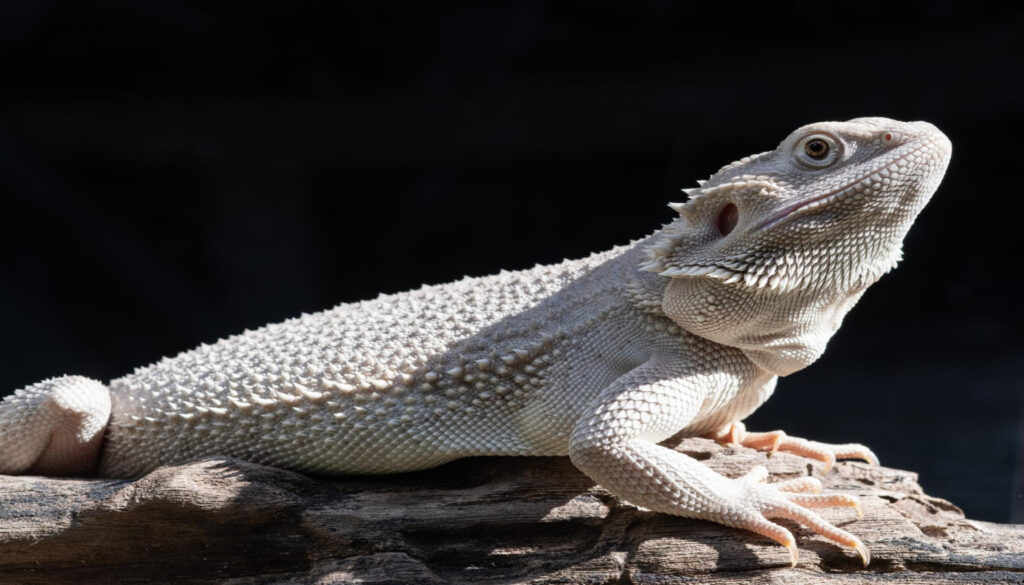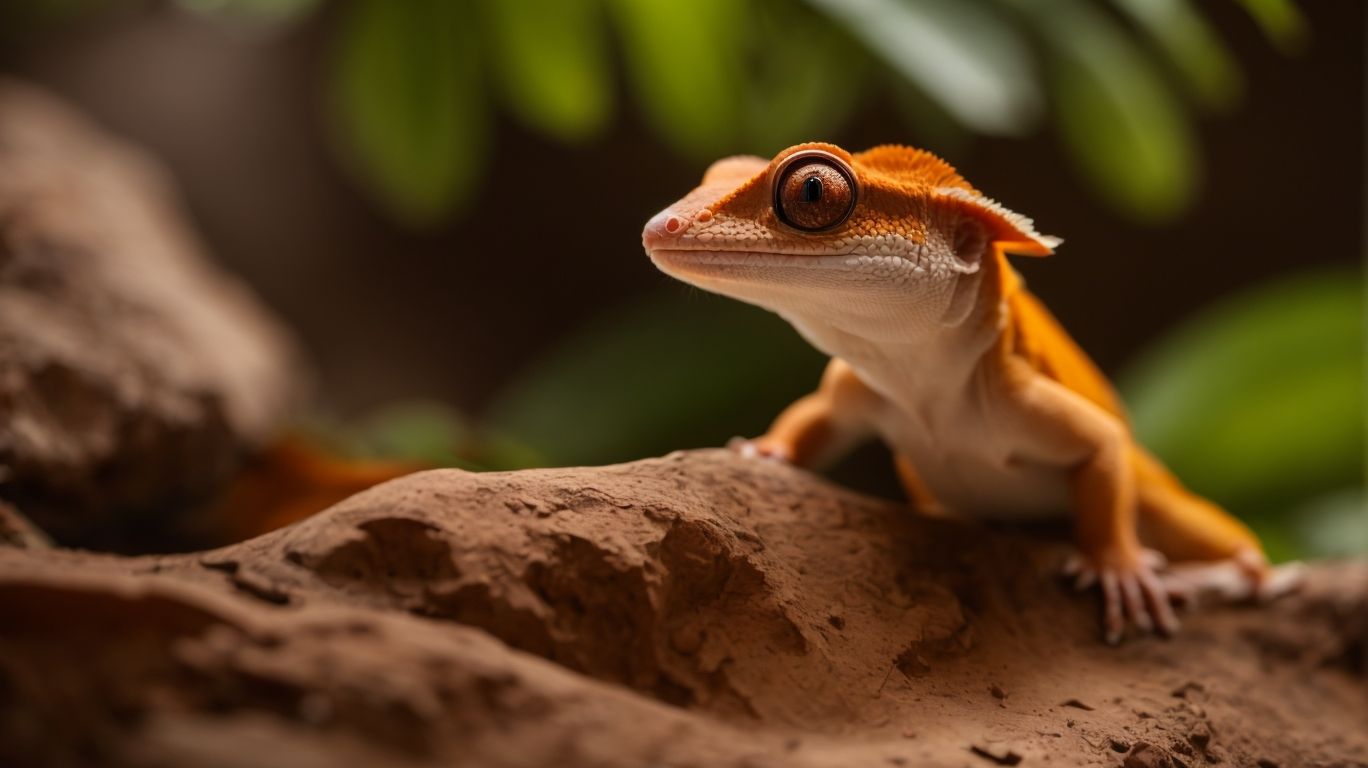
Get to Know Your New Reptilian Companion: White Bearded Dragon Facts
Table of Contents
The Origin and Discovery of White Bearded Dragons
White bearded dragons, scientifically known as Pogona vitticeps, are fascinating reptiles that make for wonderful pets. These small lizards are native to the arid regions of Australia where they can be found in the wild. They were first described by European explorers and naturalists in the late 18th and early 19th centuries. However, it wasn’t until the 1960s that these dragons started to gain recognition as pets.
As reptile enthusiasts began to discover the unique characteristics and docile nature of white-bearded dragons, they became more interested in keeping them as pets. Breeders started selectively breeding these dragons to enhance their unique physical traits and colorations. This resulted in the development of various morphs and color morphs, making white-bearded dragons even more captivating to reptile enthusiasts.
Today, white-bearded dragons are beloved pets and can be found in homes all around the world. Their unique appearance, friendly demeanor, and interesting behaviors have made them a favorite among reptile lovers. Whether you’re a seasoned reptile enthusiast or a first-time reptile owner, the white-bearded dragon is sure to bring joy and fascination to your life.
Physical Characteristics of White Bearded Dragons
White bearded dragons possess a variety of unique physical characteristics that set them apart from other reptiles. Their appearance is truly captivating, making them a favorite among reptile enthusiasts.
These dragons have a flat body covered in scales, which provides them with a rugged and distinctive look. Their most famous feature is the beard of spiky scales under their chin, from which they get their name. This beard can change colors, becoming darker when the dragon feels threatened or stressed. It’s truly a fascinating adaptation!
In terms of coloration, white bearded dragons can range from creamy white to pale yellow, with some individuals even having markings or patterns on their bodies. This variability in color makes every white bearded dragon unique and adds to their charm.
In addition to their appearance, white bearded dragons have other physical attributes that make them interesting creatures. They possess long, sharp claws that help them climb and dig in their natural habitat. Their tail is also an essential feature, serving multiple purposes such as balance and communication.
In terms of size, white bearded dragons can grow to be around 16 to 24 inches long, including their tail. It’s important to note that they do require a spacious enclosure with plenty of room to move and explore.
Understanding Behavior of White Bearded Dragons
Understanding the behavior of white bearded dragons is essential for providing them with the best care and creating a harmonious environment. These fascinating reptiles have unique behaviors that are worth exploring.
One of the first things to know about white bearded dragons is that they are diurnal, meaning they are active during the day. This makes them a great pet for those who want a reptile that can be observed and interacted with during daylight hours.
White bearded dragons are generally known for their docile and friendly nature. They are often comfortable being handled and can form bonds with their human caretakers. However, it’s important to remember that each dragon is an individual with its own personality, so some may be more sociable than others. It’s crucial to respect their boundaries and provide them with plenty of opportunities for rest and privacy.
One interesting behavior of white bearded dragons is their tendency to “arm wave.” When a dragon raises one of its forelimbs and waves it up and down, it is typically a sign of submission or a way to communicate with other dragons. This behavior can be observed during territorial disputes or when two dragons are trying to establish dominance.
Another behavior worth noting is their basking routine. White bearded dragons are ectothermic, meaning they rely on external heat sources to regulate their body temperature. They require a basking area with a heat source, such as a heat lamp or heating pad, to warm themselves. Observing their basking behavior can give you insight into their comfort and well-being.
Ideal Habitat for White Bearded Dragons
Creating the ideal habitat for your white bearded dragon is essential for their health and well-being. These reptiles require a spacious and carefully designed enclosure that mimics their natural habitat in order to thrive.
First and foremost, you’ll need a large tank or terrarium that allows your white bearded dragon ample space for movement and exploration. The minimum recommended size for an adult dragon is around 40 gallons, but larger is always better. Make sure the enclosure has a secure lid to prevent any escape attempts.
Inside the enclosure, you’ll want to provide a variety of hiding spots and climbing structures. White bearded dragons love to climb and explore, so adding branches, logs, and rocks will give them the opportunity to do so. It’s important to choose materials that are safe for your dragon, such as reptile-safe branches and natural substrates like reptile carpet or newspaper.
Another crucial element of their habitat is the temperature gradient. White bearded dragons require a basking spot with a temperature between 95-105°F (35-40°C) to properly digest their food. The rest of the enclosure should have a cooler side, ranging from 75-85°F (24-29°C), which allows them to regulate their body temperature as needed. Providing a heat lamp and a UVB light source is crucial for their overall health.
In addition to a comfortable temperature, you’ll also need to maintain proper humidity levels. Aim for a humidity range of 30-40%, as excessive moisture can lead to respiratory issues. Misting the enclosure once a day can help maintain the proper humidity levels.
Lastly, don’t forget to include a shallow dish of fresh water in their enclosure. White bearded dragons may not drink a lot of water, but they do need access to it for hydration.
Dietary Preferences of White Bearded Dragons
Feeding your white-bearded dragon a proper diet is essential for their overall health and well-being. These fascinating reptiles are omnivores, which means they eat a combination of insects and plant matter. Understanding their dietary preferences will help you provide them with a balanced and nutritious meal plan.
In terms of protein, white-bearded dragons primarily consume live insects such as crickets, mealworms, and dubia roaches. These insects provide the necessary protein and calcium for their growth and development. It’s important to ensure that the insects are appropriately sized for your dragon, as larger insects can pose a choking hazard.
In addition to insects, white-bearded dragons also enjoy a variety of leafy greens and vegetables. Some popular options include collard greens, kale, dandelion greens, and squash. It’s important to offer a diverse range of vegetables to ensure they receive the necessary vitamins and minerals.
When feeding your white-bearded dragon, it’s crucial to provide a balanced diet. Roughly 80% of their diet should consist of insects, while the remaining 20% should be comprised of leafy greens and vegetables. This balance ensures they receive the appropriate nutrients for their growth and development.
It’s also important to dust their insects with a calcium supplement before feeding them to your dragon. This helps prevent calcium deficiency, which can lead to serious health issues such as metabolic bone disease.
Health and Longevity White Bearded Dragons
As a responsible pet owner, it’s crucial to understand the health and longevity of your white bearded dragon. These fascinating reptiles have specific care requirements that, when met, can contribute to a long and healthy life for your scaly friend.
First and foremost, regular veterinary check-ups are essential to monitor your white bearded dragon’s overall health. A reptile-savvy veterinarian can provide necessary vaccinations, perform routine examinations, and address any health concerns that may arise. Regular check-ups can help prevent and detect any potential health issues early on.
Maintaining proper hygiene is also crucial for your white bearded dragon’s health. Clean their enclosure regularly, removing any waste or soiled substrate, and sanitize their habitat to prevent the growth of harmful bacteria. Ensure their water dish is clean and provide fresh water daily.
Proper nutrition is vital for your white bearded dragon’s well-being. Ensure they have a balanced diet of insects and leafy greens, providing them with the necessary vitamins and minerals. Avoid feeding them excessive amounts of fatty or sugary foods, as this can lead to obesity and other health problems.
Another important aspect of their health is maintaining proper temperature and humidity levels in their enclosure. Incorrect temperatures can lead to respiratory infections, while excessive humidity can cause respiratory problems. Regularly monitor these levels and make adjustments as needed.
Finally, providing mental stimulation and environmental enrichment is crucial for your white bearded dragon’s mental well-being. Incorporate different textures, hiding spots, and climbing structures in their enclosure to keep them active and engaged.
Conclusion – The Joy of Keeping White Bearded Dragons
Keeping a white-bearded dragon as a pet can bring immense joy and fascination to your life. These unique reptiles offer a captivating presence and make wonderful companions. Throughout this comprehensive guide, we’ve explored the basics of white bearded dragons, from their physical characteristics to their behavior and care requirements. By understanding their needs and providing proper care, you can ensure a long and happy life for your scaly friend.
White bearded dragons are not only visually stunning but also have docile and friendly natures. Their sociable behavior allows for a strong bond to form between you and your dragon, creating a rewarding and interactive relationship. Watching them wave their arms or bask in the warm sunlight brings a sense of wonder and connection to the natural world.
Creating the ideal habitat for your white bearded dragon is key to their health and happiness. By providing a spacious enclosure with proper temperature and humidity levels, as well as a balanced diet, you are setting them up for a thriving life. Additionally, regular veterinary check-ups and hygiene maintenance ensure their overall well-being.
Related Posts

Incubating Crested Gecko Eggs: Essential Techniques and Tips
Crested geckos are fascinating reptiles that are known for their…

Red Crested Gecko Health: Common Issues and Preventive Care
Are you a proud owner of a red crested gecko?…

Creating the Ideal Environment for Your Red Crested Gecko
Do you own a red crested gecko or are you…

No Comments